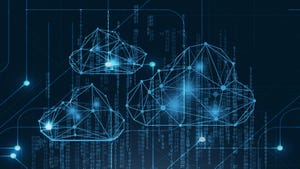Power Monitoring 101
Power now represents the single largest component of operating cost. Yet, rarely is energy as closely managed as it should be. This white paper from Eaton looks at power monitoring options that are available for organizations of any size.
April 19, 2010
Spiraling power demands and utility rates. Power sags, surges and outages. Heat-generating blade servers. Shifting utilization patterns in virtualized environments. Data center managers have a lot to keep them awake at night. The servers that once could be powered for say, $4,800 a year are now consuming $28,000 or more in energy a year. Power now represents the single largest component of operating cost. Yet, rarely is energy as closely managed as it should be. This white paper from Eaton looks at power monitoring options that are available for organizations of any size.
Many data center managers don’t know the efficiency of their IT equipment or the site infrastructure, nor do they have a clear path in mind for maintaining and improving that efficiency. There’s a lot of low-hanging fruit being overlooked—readily available opportunities to substantially reduce energy costs and become “greener” in the process.
With the right power monitoring system, your organization can protect data and applications while optimizing the power delivery infrastructure for efficiency and lower cost. New supervisory, connectivity and protection capabilities provide an envelope of protection for your entire power infrastructure.
With a real-time, unified view of power and facilities systems, organizations can:
Proactively manage power quality to enhance the availability and service life of IT equipment.
Dynamically provision servers to respond to changing energy conditions.
Intelligently balance workloads to optimize energy usage and control costs.
Identify ways to improve data center energy efficiency and power usage effectiveness.
Provide charge backs to users based on the actual energy consumption of their IT services.
Learn how you can remotely monitor and manage a single uninterruptible power system (UPS), an enterprise-wide network of many UPSs and power distribution devices, or a complete IT support infrastructure, including generators, environmental systems and detection devices, and other components from multiple vendors.
About the Author
You May Also Like


.jpg?width=300&auto=webp&quality=80&disable=upscale)




